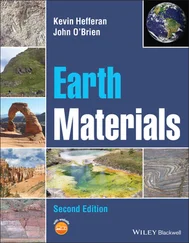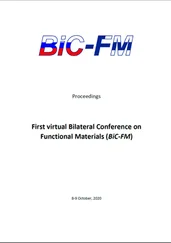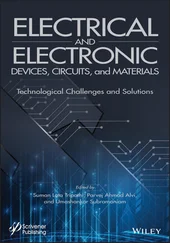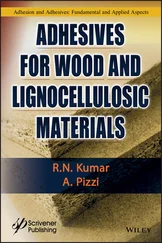Jing-Feng Li - Lead-Free Piezoelectric Materials
Здесь есть возможность читать онлайн «Jing-Feng Li - Lead-Free Piezoelectric Materials» — ознакомительный отрывок электронной книги совершенно бесплатно, а после прочтения отрывка купить полную версию. В некоторых случаях можно слушать аудио, скачать через торрент в формате fb2 и присутствует краткое содержание. Жанр: unrecognised, на английском языке. Описание произведения, (предисловие) а так же отзывы посетителей доступны на портале библиотеки ЛибКат.
- Название:Lead-Free Piezoelectric Materials
- Автор:
- Жанр:
- Год:неизвестен
- ISBN:нет данных
- Рейтинг книги:5 / 5. Голосов: 1
-
Избранное:Добавить в избранное
- Отзывы:
-
Ваша оценка:
- 100
- 1
- 2
- 3
- 4
- 5
Lead-Free Piezoelectric Materials: краткое содержание, описание и аннотация
Предлагаем к чтению аннотацию, описание, краткое содержание или предисловие (зависит от того, что написал сам автор книги «Lead-Free Piezoelectric Materials»). Если вы не нашли необходимую информацию о книге — напишите в комментариях, мы постараемся отыскать её.
Lead-Free Piezoelectric Materials
Lead-Free Piezoelectric Materials
Lead-Free Piezoelectric Materials — читать онлайн ознакомительный отрывок
Ниже представлен текст книги, разбитый по страницам. Система сохранения места последней прочитанной страницы, позволяет с удобством читать онлайн бесплатно книгу «Lead-Free Piezoelectric Materials», без необходимости каждый раз заново искать на чём Вы остановились. Поставьте закладку, и сможете в любой момент перейти на страницу, на которой закончили чтение.
Интервал:
Закладка:
References
1 1 Coursey, P.R. and Brand, K.G. (1946). Dielectric constants of some titanates. Nature 157: 297–298.
2 2 Roberts, S. (1947). Dielectric and piezoelectric properties of barium titanate. Physical Review 71 (12): 890.
3 3 Shirane, G. and Takeda, A. (1952). Phase transitions in solid solutions of PbZrO3 and PbTiO3: I. Small concentrations of PbTiO3. Journal of the Physical Society of Japan 7: 5–11.
4 4 Shirane, G. and Suzuki, K. (1952). Crystal structure of Pb(Zr–Ti)O3. Journal of the Physical Society of Japan 7: 333–333.
5 5 Sawaguchi, E. (1953). Ferroelectricity versus antiferroelectricity in the solid solutions of PbZrO3 and PbTiO3. Journal of the Physical Society of Japan 8: 615–629.
6 6 Jaffe, B., Roth, R.S., and Marzullo, S. (1954). Piezoelectric properties of lead zirconate–lead titanate solid‐solution ceramics. Journal of Applied Physics 25: 809–810.
7 7 Jaffe, B., Cook, W.R., and Jaffe, H. (1971). Piezoelectric Ceramics. Academic Press.
8 8 Haertling, G.H. (1999). Ferroelectric ceramics: history and technology. Journal of the American Ceramic Society 82: 797–818.
9 9 Uchino, K. (1997). Piezoelectric Actuators and Ultrasonic Motors. Boston, MA: Kluwer Academic Publishers.
10 10 Trolier‐McKinstry, S. and Randall, C.A. (2018). Movers, shakers, and storers of charge: the legacy of ferroelectricians L. Eric Cross and Robert E. Newnham. Journal of the American Ceramic Society 100: 3346–3359.
11 11 EU‐Directive 2002/95/EC (2003). Restriction of the Use of Certain Hazardous Substances in Electrical and Electronic Equipment (RoHS). Official Journal of the European Union 46 (L37): 19.
12 12 Takenaka, T. and Nagata, H. (2005). Current status and prospects of lead‐free piezoelectric ceramics. Journal of the European Ceramic Society 25: 2693–2700.
13 13 Saito, Y., Takao, H., Tani, T. et al. (2004). Lead‐free piezoceramics. Nature 432: 84–87.
14 14 Shrout, T.R. and Zhang, S.J. (2007). Lead‐free piezoelectric ceramics: alternatives for PZT? Journal of Electroceramics 19: 111–124.
15 15 Roedel, J., Jo, W., Seifert, K.T.P. et al. (2009). Perspective on the development of lead‐free piezoceramics. Journal of the American Ceramic Society 92: 1153–1177.
16 16 Li, J.‐F., Wang, K., Zhu, F.‐Y. et al. (2013). (K,Na)NbO3‐based lead‐free piezoceramics: fundamental aspects, processing technologies, and remaining challenges. Journal of the American Ceramic Society 82: 797–818.
17 17 Roedel, J. and Li, J.‐F. (2018). Lead‐free piezoceramics: status and perspectives. MRS Bulletin 43: 576–580.
18 18 Trolier‐McKinstry, S., Zhang, S.J., Bell, A.J., and Tan, X.L. (2018). High‐performance piezoelectric crystals, ceramics, and films. Annual Review of Materials Research 48: 191–217.
19 19 Guo, R., Cross, L.E., Park, S.E. et al. (2000). Origin of the high piezoelectric response in PbZr1−xTixO3. Physical Review Letters 84: 5423–5426.
20 20 Noheda, B., Cox, D.E., Shirane, G. et al. (2001). Stability of the monoclinic phase in the ferroelectric perovskite PbZr1−xTixO3. Physical Review B 63: 014103.
21 21 Noheda, B. (2002). Structure and high‐piezoelectricity in lead oxide solid solutions. Current Opinion in Solid State and Materials Science 6: 27–34.
22 22 IEEE Standard on Piezoelectricity. (1987). ANSI/IEEE, Standard 176‐1987.
23 23 Lines, M.E. and Glass, A.M. (1979). Principles and Applications of Ferroelectrics and Related Materials. Oxford: Clarendon.
24 24 Cady, W.G. (1946). Piezoelectricity: An Introduction to the Theory and Applications of Electromechanical Phenomena in Crystals. McGraw‐Hill.
25 25 Sawyer, C.B. and Tower, C.H. (1930). Rochelle salt as a dielectric. Physical Review 35: 269–273.
26 26 Mitsui, T., Tatsuzaki, I., and Nakamura, E. (1976). An Introduction to the Physics of Ferroelectrics. London: Gordon and Breach.
27 27 Damjanovic, D. (1998). Ferroelectric, dielectric and piezoelectric properties of ferroelectric thin films and ceramics. Reports on Progress in Physics 61: 1267–1324.
28 28 Jin, L., Li, F., and Zhang, S.J. (2014). Decoding the fingerprint of ferroelectric loops: comprehension of the material properties and structures. Journal of the American Ceramic Society 97: 1–27.
29 29 Berlincourt, D. and Jaffe, H. (1958). Elastic and piezoelectric coefficients of single‐crystal barium titanate. Physical Review 111: 143–148.
30 30 Jaffe, H. and Berlincourt, D.A. (1965). Piezoelectric transducer materials. Proceedings of the IEEE 53: 1372–1385.
31 31 Cain, M.G. (2014). Characterisation of Ferroelectric Bulk Materials and Thin Films. Springer.
32 32 Yamaguchi, T. and Hamano, K. (1979). Inteferometric method of measuring complex piezoelectric constants of crystals in a frequency range up to about 50 kHz. Japanese Journal of Applied Physics 18: 927–932.
33 33 Zhang, Q.M., Pan, W.Y., and Cross, L.E. (1988). Laser interferometer for the study of piezoelectric and electrostrictive strains. Journal of Applied Physics 63: 2492–2496.
34 34 Li, J.‐F., Moses, P., and Viehland, D. (1995). Simple, high‐resolution interferometer for the measurement of frequency‐dependent complex piezoelectric responses in ferroelectric ceramics. Review of Scientific Instruments 66: 215–221.
35 35 Moilanen, H. and Leppävuori, S. (2001). Laser interferometric measurement of displacement‐field characteristics of piezoelectric actuators and actuator materials. Sensors and Actuators A 92: 326–334.
36 36 Warner, A.W., Onoe, M., and Coquin, G.A. (1966). Determination of elastic and piezoelectric constant in class (3M). Journal of the Acoustical Society of America 42: 1223–1231.
37 37 Fialka, J. and Benes, P. (2013). Comparison of methods for the measurement of piezoelectric coefficients. IEEE Transactions on Instrumentation and Measurement 62: 1047–1057.
2 High‐Performance Lead‐Free Piezoelectrics
2.1 Introduction
Piezoelectric materials are used in a large variety of applications including actuators, sensors, electromechanical motors, and sonar systems. In the future, the applications will be extended to energy harvesting systems for distributed low‐power systems. The global market for piezoelectric devices is estimated to be valued at US$ 25.1 billion in 2019 and projected to expand at a compounded annual growth rate of 6.2% through the next five years [1]. One of the most widely used piezoelectric ceramic materials is the solid solution of lead zirconate (PbZrO 3) and lead titanate (PbTiO 3), commonly known as PZT, with general formula PbZr 1−xTi xO 3[2]. As mentioned in Chapter 1, although BaTiO 3was discovered before lead zirconate titanate (PZT), the latter soon dominated the market for piezoelectric applications because of its comprehensively excellent piezoelectric properties and high Curie temperature as well as the flexibility for compositional modification to adjust to specific applications.
The outstanding properties of PZT originate from the nature of end‐number compounds and the phase structure evolution in their solid solutions. Both PbZrO 3and PbTiO 3have perovskite structure with Pb ions at the same A‐site. PbZrO 3is antiferroelectric, but PbTiO 3is ferroelectric [3]. Solid solutions are formed between them in a full range, but there exists a steep boundary where a transition occurs between the rhombohedral Zr‐rich phase and the tetragonal Ti‐rich phase, as shown in Figure 2.1. It should be noted that the tetragonal PbTiO 3has a high transition temperature to cubic phase, which endow high Curie temperature to PZT. The phase boundary separating two phases in a solid solution system is called morphotropic phase boundary (MPB), where piezoelectric coefficients, dielectric constant, and electromechanical coupling factor are greatly enhanced [4]. The “phase boundary” is also considered as a composition where the two phases are believed to coexist, which renders the materials more responsive to extra stimuli. It should be noticed that the MPB is nearly temperature independent, which is why the properties of PZT ceramics have excellent temperature stability. More in‐depth studies had been conducted regarding the nature of the MPB using advanced structural characterization techniques, leading to several modified versions of the PZT phase diagram. One representative work suggested that the MPB is a narrow region where monoclinic phases exist in between the tetragonal and rhombohedral phases [5, 6]. It seems that the hierarchical structures ubiquitously present in ferroelectric materials makes the phase diagram studies more complicated than non‐ferroelectric materials [7]. Nevertheless, a similar concept of MPB is useful and highly desirable for the development of lead‐free piezoelectric materials.
Читать дальшеИнтервал:
Закладка:
Похожие книги на «Lead-Free Piezoelectric Materials»
Представляем Вашему вниманию похожие книги на «Lead-Free Piezoelectric Materials» списком для выбора. Мы отобрали схожую по названию и смыслу литературу в надежде предоставить читателям больше вариантов отыскать новые, интересные, ещё непрочитанные произведения.
Обсуждение, отзывы о книге «Lead-Free Piezoelectric Materials» и просто собственные мнения читателей. Оставьте ваши комментарии, напишите, что Вы думаете о произведении, его смысле или главных героях. Укажите что конкретно понравилось, а что нет, и почему Вы так считаете.












